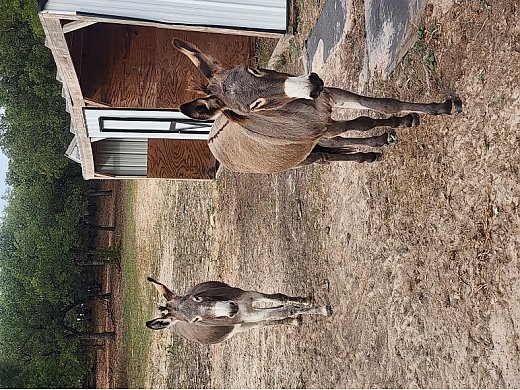Horse and Donkey Breeding: A Comprehensive Guide to Successful Mules and Hinny Production
The world of equine breeding is vast and fascinating, encompassing a diverse range of breeds and practices. One particularly intriguing area is the hybridization of horses and donkeys, resulting in the creation of mules and hinnies. While not as common as breeding within species, understanding the intricacies of horse and donkey breeding is crucial for successful mule and hinny production. This comprehensive guide will explore the process, highlighting key factors for achieving optimal results.
Understanding the Basics: Mules vs. Hinny
Before delving into the specifics of breeding, it's vital to understand the difference between mules and hinnies:
- Mules: The offspring of a female horse (mare) and a male donkey (jack). Generally, mules are larger and stronger than hinnies.
- Hinnies: The offspring of a female donkey (jenny) and a male horse (stallion). Hinnies tend to be smaller and more temperamental than mules.
Both mules and hinnies are sterile, meaning they cannot reproduce. This is due to the differing chromosome numbers between horses (64) and donkeys (62), resulting in an odd number of chromosomes in the offspring (63). This prevents proper meiosis and gamete formation.
The Breeding Process: Challenges and Considerations
Breeding horses and donkeys presents unique challenges compared to breeding within species. Several factors require careful consideration:
- Size Discrepancy: The significant size difference between horses and donkeys can make natural mating difficult and potentially dangerous for the smaller animal. Artificial insemination (AI) is often preferred to mitigate these risks.
- Temperament: Donkeys, particularly jacks, can be stubborn and aggressive. Careful handling and experienced handlers are essential throughout the process.
- Gestation Period: The gestation period for a donkey-horse hybrid is slightly longer than for a horse pregnancy, typically lasting around 360-370 days.
- Parturition: Due to the size disparity and potential for complications, veterinary supervision during birthing is crucial. This is particularly important for first-time mothers.
Selecting the Right Breeding Stock
The quality of the parent animals significantly impacts the resulting offspring. Careful selection is paramount:
- Mare Selection: Choose a healthy, well-tempered mare with a proven breeding history. Consider her size and conformation as these traits can influence the mule or hinny's characteristics.
- Jack/Stallion Selection: Select a jack or stallion known for its temperament and physical attributes. Again, size and conformation are important factors. Look for animals with strong musculature and good bone structure.
Artificial Insemination: A Common Practice
Artificial insemination (AI) is frequently employed in horse and donkey breeding. It offers several advantages:
- Improved Safety: Eliminates the risks associated with natural mating, particularly for the smaller donkey.
- Increased Control: Allows for precise timing and greater control over the breeding process.
- Wider Genetic Pool: Enables access to superior genetics from geographically distant animals.
Post-Breeding Care: Nutrition and Monitoring
Proper nutrition and veterinary monitoring are vital throughout the pregnancy and post-partum period:
- Dietary Requirements: Ensure the pregnant mare or jenny receives a balanced diet rich in nutrients essential for fetal development.
- Veterinary Check-ups: Regular veterinary examinations are crucial to monitor the health of both the mother and developing foal.
The Value of Mules and Hinnies
Mules and hinnies are highly valued for their unique qualities:
- Strength and Endurance: They often possess exceptional strength, endurance, and surefootedness, making them ideal for various working roles.
- Disease Resistance: Hybrid vigor can result in increased disease resistance compared to purebred horses or donkeys.
- Temperament: While hinnies can be temperamental, mules are often praised for their calm and patient demeanor.
Conclusion: A Rewarding but Challenging Endeavor
Breeding horses and donkeys to produce mules and hinnies is a rewarding but challenging endeavor. Careful planning, skilled management, and expert veterinary care are essential for a successful outcome. By understanding the intricacies of this unique breeding process, enthusiasts can contribute to the preservation and appreciation of these remarkable hybrid animals.
Keywords: Horse breeding, donkey breeding, mule breeding, hinny breeding, artificial insemination, equine breeding, hybrid animals, mule production, hinny production, horse and donkey hybrids, gestation period, parturition, mare, jack, jenny, stallion.

